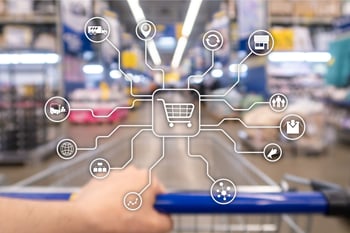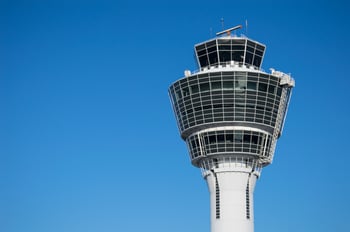
Every year predictions are made on what the coming year is to be. Some of the predictions come true; others never see the light of day; and still others never make the list of predictions, yet weigh heavily on the year.
The COVID-19 pandemic made 2020’s predictions worthless as it weighed heavily on the world and changed supply chains for what may be forever, but that will not deter us from walking through today’s trends and what it means for 2021 initiatives.
Top Logistics and Supply Chain Trends
- In two of the last three years (2018 and 2020), logistics professionals have had to operate in the most challenging freight capacity constrained markets in history. This trend is one we do not expect this trend to go away any time soon.
- While the reasons that drove the capacity issues were much different in 2018 and 2020, the underlying drivers of the issues were the same and unlike prior times the market challenges are no longer to be corrected by brute force.
- As part of the capacity challenges, the volatility and stretched supply and demand dynamics within the logistics and supply chains across the country is also here to stay.
- Service lows on ground, air and ports will continue to be a by-product when the capacity challenges hit the freight market.
- Record spot rates will also be a product of the capacity challenges, as those needing capacity will be at the mercy of the supply-demand economic forces that hit hard when capacity is at its most difficult times.
- Shippers’ demand spikes are not necessarily going to follow traditional seasonal patterns.
- Consumers have more choices than they have ever had, which drives demand spikes in the new supply chain dynamic brought on by ecommerce buying patterns becoming a larger mix of total purchases.
- Ecommerce ensures businesses with the best product wins out through survival of the fittest.
- Ecommerce bypasses the long standing supply chain of going through the retail buyer gate and having to hold high levels of sell-through to remain in the store.
- Logistics demands change quickly, as consumers no longer have to wait for traditional elongated retail brick-and-mortar store supply chains by purchasing through e-commerce options.
- Omnichannel distribution strategy for those companies that have both an ecommerce and brick-and-mortar presence.
 Ecommerce and omnichannel supply chain strategies were trending upward, but have accelerated with the COVID-19 pandemic.
Ecommerce and omnichannel supply chain strategies were trending upward, but have accelerated with the COVID-19 pandemic.- Reports indicate ecommerce has been pushed forward 4 to 6 years as a result of COVID-19.
- World, country and city population growth is changing the supply chain networks for manufacturing and consumption of goods.
- Population distribution across the globe and within the USA itself is changing supply chain demands.
- Hybrid work from home / office provides more freedom in where people can live making the changes in the USA accelerating the change.
- Technology is accelerating in the logistics and supply chain industry.
- No one company is leading the charge more than Amazon, but make no mistake others are quickly following their example just to keep up.
- The number of technology companies focused on the logistics and supply chain networks not slowing down.
- Expect tremendous M&A activity in the logistics and supply chain space over the coming years, as the winners work to accelerate their successes.
- Autonomous trucking is moving forward quicker than many expected.
- Massive data consortiums and networks in the various technology sectors within the logistics and supply chain market are making connections that allow real-time BI and automation a reality for companies of all sizes.
- In other words, the Fortune 500 companies are not the only ones able to leverage improvement through data.
- A distributed hybrid workforce that combines working from home and in the office has changed how people and teams interact to get the job done.
- While the 2021 economic recovery is vulnerable at best, the monetary and fiscal policy are better aligned and extremely supportive around the globe to bolster the recovery from the COVID-19 pandemic.
- Consumers want to know the companies they support are socially and environmentally responsible.
- Consumers hold more loyalty if eco-friendly practices are adopted.
 Cyber security is more important than ever before and cannot be neglected.
Cyber security is more important than ever before and cannot be neglected.- Logistics and supply chain companies hit by ransomware and other hacks accelerated in 2020. The challenges brought on by cybersecurity has the ability to force closures by locking all ability to move products, collect orders and pay or collect through businesses hit by these hacks.
- Working from home has opened the doors for hackers working overtime to cause major issues for shippers, motor carriers and logistics companies.
- Technology was a big story for the largest supply chains and it continues to accelerate, but was put on hold for others as they had to turn their focus on operating through the global pandemic.
With the above in mind, let’s walk through the winning trends in logistics and supply chain strategies that shippers, motor carriers and logistics companies are employing.
Top Strategies to Address Logistics and Supply Chain Trends
Flexible & Agile
Assembling a logistics and supply chain that is both flexible and agile to adjust quickly for expansion or contraction needed to address vendor and customer requirements.
As part of being flexible and agile there needs to be contingency planning to account for political, labor and natural disaster impacts that could impact a company’s supply chain.
Some things to consider to become more flexible include:
- Shorter RFP cycles or hold with trusted partners.
- Expand list of freight providers.
- Pay close attention to regionals, niche and any provider that offer alternative capacity solutions.
- Bring in alternative freight modes to offset any shortcomings one mode may have at any time.
- Example would be to add 53’ domestic intermodal options to augment truckload.
- It is incumbent to add them into the mix before you need them as this mode is more of a contract play than a spot rate option.
- Build carrier relationships based on trust, not price.
- Long term business partners will net larger price concessions than operating a carrier of the month club.
- Diversify and redundancy in the supplier base across countries to limit the impact of political or natural disasters.
Customer Centric
The key take-away is to think outside of the box and extend supply chain communications among the organizations your company depends on for revenue, which would be both customers and vendors.
Develop system connectivity to all stakeholders to provide full transparency to those parts of the organization that touch the customer.
Ecommerce & Omni Channel
Ecommerce and omni channel distribution managed as an integral part of a company’s distribution strategy, not an add on to the brick-and-mortar strategy.
Systems not only operate the business, but also maximize the opportunities of using all available options for distributing the product to the end customer.
To this end, transportation management systems are being upgraded and brought into companies to optimize orders and bring full transparency to order fulfillment strategies.
Strengthen Partnerships
Companies are doubling down on trusted partners. There cannot be enough said on how a long term partnership reduces actual costs, not increase them. The thought of moving business from one freight provider or vendor used in the supply chain to another based on the price of today is short-term thinking and found to be unsuccessful in today’s freight market.
Long term partnerships allow all parties involved in your business to understand, as you understand it, to maximize service, reduce cost and drive long term value.
The caveat on doubling down is it MUST be with trusted partners that are not in it for themselves. There are a couple of ways to judge whether or not you have a trusted partner:
- Ask the company representative to give you five or more examples where they walked away from the business because their company was not a good fit for their customer.
- They should be able to provide examples of both actual customers or prospects.
- The examples should be about their customer, not about being a low margin business or because they were a difficult customer.
 Sustainability
Sustainability
Consumers are more eco-friendly and understand the impact the transportation industry plays a significant role in greenhouse gas emissions.
Supply chains sustainability is both a freight provider and warehouse topic.
Areas to consider for warehousing operations include:
- Lighting used reduces electricity demand.
- Packaging is eco-friendly.
- Products sold consist of sustainable components.
- Freight is moved through the most eco-friendly option, while also meeting delivery requirements.
For the freight side of the sustainability equation shippers need to search out those motor carriers, freight brokers and logistics service providers that are registered with the EPA SmartWay Program. The purpose of the EPA’s SmartWay program is to help companies advance supply chain sustainability by measuring, benchmarking, and improving freight transportation efficiency. The program is set in place to monitor, measure and improve their carbon footprint and environmental impact of their business through various tools provided by the EPA.
Shippers can be a part of the EPA SmartWay program also.
Data
Data needs to move up in importance. No longer is it good enough to capture logistics transactions in summary through accounting and finance tools.
Shipper need to collect data by shipment and at a very minimum have the following details associated with it:
- Date of Scheduled and Actual Pick-Up and Delivery
- Pallet count
- Weight
- Dimensions
- Commodity
- Carrier
- Tariff Use
- Cost Broken Down By: Linehaul, Fuel, Accessorial
- Charge-Back Amount & Reason
- Origin and Destination Zip Codes
- Freight Moved Via Contract or Spot Contract
- Special Circumstances
- Lead Time Order Was Given to Freight Department to Move the Freight
More to Data than Collecting Data.
- The data must be collected digitally.
- The data must exist in a system that allows users to easily analyze it in a way that creates executable decision points.
- The data must be shared without an individual’s interpretation.
- The data must be analyzed against company performance and benchmarked against market data coming out of the massive freight consortiums.
- Benchmarking against internal information is nothing more than measuring against a personal best target and like many individual sports where personal bests are measured personal bests do not win the races.
Security
The logistics industry has been hard hit by cyberattacks and ransomware events. These events are occurring on a more frequent basis and they are crippling companies of all sizes.
If you are not thinking about security, the bad actors will.
Get in Line for Technology Update / Upgrade Early in 2021
Technology has been moving at a breakneck speed for the most disciplined companies in 2020, but not all were fortunate enough to have the financials to support the investment.
With the previous in mind, companies that had to put their technology on hold in 2020 are behind the curve. Combine this with new challenges companies found in working in the new normal brought on by COVID and global politics increasing those needing technology upgrades and there is a tremendous demand for attention and bandwidth for logistics and supply chain technology companies.
The problem this brings is demand is going to outstrip demand on an exponential basis.
The end result is those that are late to the table will struggle to get their solutions implemented, so get in line early or suffer the consequences.
 Outsourcing Freight, Logistics and Supply Chain Activities
Outsourcing Freight, Logistics and Supply Chain Activities
Companies are outsourcing more of their logistics and supply chain work:
- Realizing a company’s supply chain is a competitive advantage.
- The cost of keeping up with technology, relationships, market knowledge and talent is too expensive to do internally.
- With the previous in mind, companies want to focus all their resources focused on their product and service.
- Volatility in the volatile swings in the freight market is best managed via a variable cost outsourced freight management service solution.
SAAS (software-as-a-service) and SCAAS (supply-chain-as-a-service) are two concepts to grab hold of to assist in moving forward quickly and on a variable cost basis.
SAAS cloud based transportation management software (TMS) systems is the best option for companies of all sizes to access the technology required to take their supply chain from a cost center to competitive advantage for those that want to manage the supply chain within their four walls.
For those companies that want to focus on what they do best and leave the transactional supply chain work to those that have created strong business doing it for others, their option is to turn to SCAAS. The SCAAS approach has been a long time practice of large companies where companies outsource their logistics functions, but as technology has improved and competition has brought down the pricing of the SCAAS solution it is even a better option for those mid-sized shippers looking to supercharge their supply chain in months, not years.
 Control Tower View of Logistics and Supply Chain
Control Tower View of Logistics and Supply Chain
As part of any SAAS or SCAAS solution is the control tower concept. Much like an airport control tower where flights are reviewed, managed and directed from origin to destination and from zero to 30,000, so too can a company’s logistics and supply chain activities.
A supply chain control is an agile cloud platform that focuses on providing end-to-end supply chain visibility and control. By integrating and extending existing ERP, WMS, and TMS systems with suppliers, manufacturers, 3PLs, and other partners, control towers provide actionable, granular visibility and operational control across the entire supply chain to optimize on efficiency, service and cost.
Supply Chains Evolution to Supply Networks
Companies are moving from supply chains to supply networks.
Supply chains are moving to supply networks. The difference is supply chains infer a one-to-one linkage where one step needs to be completed before the next step can be taken, while supply networks imply a many-to-many relationship where multiple inputs and outputs can be managed at one time allowing for quicker throughput and acceleration of product movement from start to finish.
Automate Tasks to Give Time to the Big Picture
With supply chain chains moving to supply chain networks shippers and logistics companies need to automate the tasks, so they can see the big picture to compete successfully in the market.
The result is the drive for more technology to automate the daily tasks so the logistics professionals can do the value add work of improving cost, transit and overall effectiveness of their supply chain network.
Integrate Supply Chain Technology Partners
More and more companies are embracing best in breed logistics and supply chain technology found in the market versus building the competence within its four walls..
There is no need to spend hundreds of thousands of dollars building and maintaining an internally developed TMS, with connections into the 100’s of technology platforms to further optimize a supply chain network.
The best SAAS TMS systems of today allow shippers to build best in breed supply chain systems that are best fit for their business requirements by integrating in several of the best ancillary supply chain systems that have established a niche within a transaction set within a supply chain.
The top-tier TMS systems have already established API connections into their system to allow shippers and logistics to build the best of breed TMS quickly and easily.
As an example, the MercuryGate cloud TMS has over 50 such integrations already in place and building more every year.
Conclusion on Logistics and Supply Chains Trends
The two themes to close with are logistics professionals need to have an open mind and be relentless in their pursuit of logistics and supply chain excellence for your company.
An open mind will be needed in making supply chain decisions this year as many will be challenging and uncomfortable decisions, but with tremendous upside once fully implemented.
The effects of 2020 will be felt in 2021 with capacity shortages in moving the freight itself and technology providers in the logistics and supply chain space, as the numbers of companies needing to drive improvements over their 2020 results and those not wanting to fall behind competition in their drive to supply chain excellence will be significantly greater than prior years. So again, those who move quickest will improve their chances of accomplishing their company and team’s goals in 2021.
If you're ready to take the next step, at InTek Freight & Logistics, we can help. Just tell us what you need and we'll discuss how our expertise can help with the unique shipping challenges your business faces. Rather do a bit more research first? View our Freight Guides for comprehensive articles and eBooks on all things freight and logistics.
Get Updates
Featured Articles
Categories
- Freight & Shipping Costs (54)
- Freight Broker (60)
- Freight Forwarder (2)
- Intermodal Transportation (184)
- International & Cross Border Logistics (43)
- Logistics & Supply Chain (420)
- Logistics Service Provider (77)
- LTL (39)
- Managed TMS (49)
- News (39)
- Supply Chain Sustainability (12)
- Transportation Management System (37)
- Truckload (122)
- Warehousing & Distribution (50)




